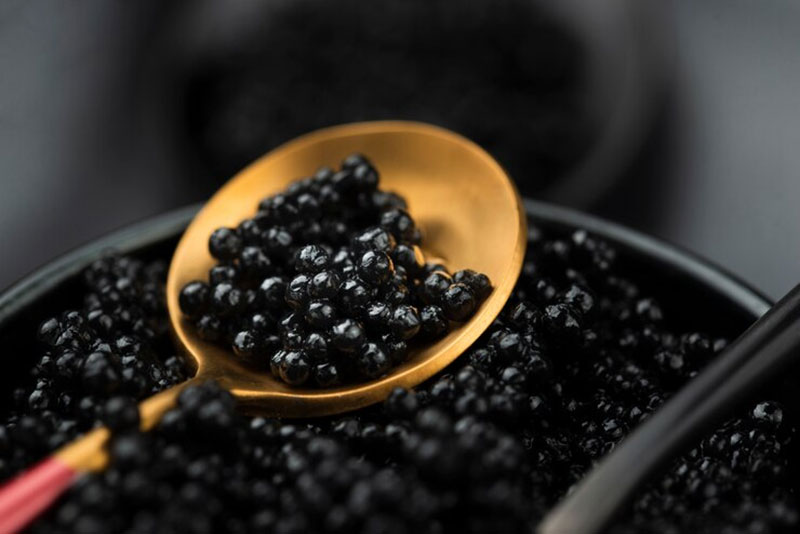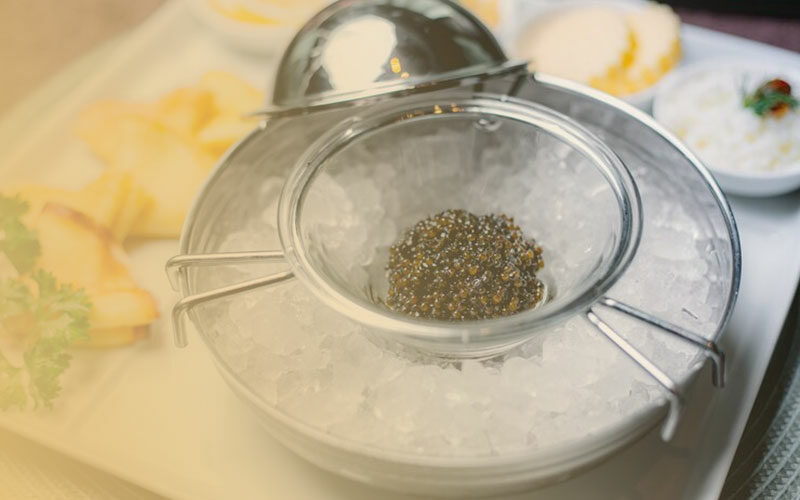Caviar has long been synonymous with luxury and indulgence. This exquisite delicacy, harvested from sturgeon fish, offers a taste of opulence that has captivated gourmets around the world. Whether you’re a seasoned caviar enthusiast or a curious first-timer, understanding how to properly enjoy caviar can significantly enhance your experience, especially when choosing to consume Sterling Caviar. From selecting the right tableware to appreciating its nuanced flavors, this guide will walk you through everything you need to know to savor caviar to its fullest.
Essential Tips for Every Caviar Enthusiast
Preparing to Open Your Caviar Tin
Before you even think about digging into your caviar, there are a few important steps to take. Proper preparation is crucial to maintaining the integrity and flavor of the roe.
Storage and Temperature
Caviar should be stored in the coldest part of your refrigerator, typically between 28-32°F (-2 to 0°C). Keeping it at the right temperature ensures that the caviar maintains its freshness and delicate texture. Once you’ve purchased your caviar, plan to consume it within a few days to enjoy it at its best.
Handling with Care
When you’re ready to open the tin, handle it with care. Use a caviar key or a butter knife to gently pry open the lid. Avoid using too much force, as this can damage the eggs and compromise their quality. If you don’t have a caviar key, a coin can also work in a pinch.
Selecting the Right Tableware
Choosing the appropriate tableware is more important than you might think. The materials you use can affect the taste of the caviar.
The Importance of Non-Metallic Utensils
Avoid using metallic utensils and bowls, as they can impart a metallic taste to the delicate caviar. Instead, opt for mother-of-pearl, bone, or even plastic spoons. These materials won’t alter the flavor and will ensure you experience the caviar’s true taste.
Ideal Serving Dishes
For serving, glass or crystal dishes are ideal. They not only enhance the visual appeal of the caviar but also preserve its flavor. If you want to keep your caviar chilled, consider placing the serving dish on a bed of crushed ice.
Enjoying Caviar: Off the Hand or with a Spoon?
How you choose to eat caviar is largely a matter of personal preference, but each method offers a unique experience.
The Traditional Method: Off the Hand
One of the most traditional ways to enjoy caviar is to serve it off the back of your hand, specifically the area between your thumb and index finger. This method allows the caviar to warm slightly, releasing its full aroma and flavor as it touches your palate.
Using a Spoon
If the hand method isn’t for you, using a spoon is perfectly acceptable. Just make sure it’s non-metallic. Place a small amount of caviar on the spoon and savor it slowly, allowing the flavors to develop on your tongue.
Adding the Perfect Garnishes
While caviar is delightful on its own, pairing it with the right garnishes can elevate the experience even further.
Classic Accompaniments
Traditional garnishes include blinis (small pancakes), crème fraîche, and finely chopped onions. These accompaniments complement the caviar without overpowering its delicate taste. You can also serve it with toast points or boiled potatoes for a more substantial bite.
Experimenting with Modern Twists
For a contemporary twist, try pairing caviar with sushi, scrambled eggs, or even on top of a dollop of avocado toast. The key is to choose garnishes that enhance the caviar’s flavor rather than compete with it.

Understanding the Nuances: Appearance and Taste
Caviar isn’t a one-size-fits-all delicacy. Different types of caviar offer distinct appearances and taste profiles.
Visual Appeal
The appearance of caviar can vary significantly depending on the type of sturgeon and its habitat. Beluga caviar, for instance, is known for its large, pearlescent eggs that range from light to dark gray. Osetra caviar typically features medium-sized eggs with a golden to brown hue, while Sevruga caviar has smaller, darker eggs. Each type has its unique visual allure that adds to the overall experience.
Flavor Profiles
The flavor of caviar can also differ greatly. Beluga caviar is often described as creamy and buttery, with a rich, lingering taste. Osetra caviar offers a nutty, briny flavor with a firm texture, while Sevruga caviar is known for its bold, salty taste. Understanding these differences can help you choose the caviar that best suits your palate.
Savoring the Full Flavor of Caviar
To truly appreciate the complexity of caviar, it’s essential to take your time and engage your senses.
Smell
Before tasting, take a moment to inhale the aroma of the caviar. The scent should be clean and fresh, reminiscent of the sea. A strong fishy smell can be a sign of poor quality or improperly stored caviar.
Taste
When you place the caviar in your mouth, let it rest on your tongue for a moment. This allows the eggs to warm slightly and release their flavors. Gently press the eggs against the roof of your mouth to experience the texture and taste. The flavor should be rich and complex, with notes of the sea, butter, and sometimes a hint of nuttiness.
Pairing with Beverages
Caviar pairs beautifully with certain beverages. Traditional choices include ice-cold vodka, wine, or Champagne, which cleanse the palate and complement the briny flavor of the caviar. For a non-alcoholic option, try sparkling water or lightly chilled white grape juice.
Conclusion
Enjoying caviar is more than just a culinary experience; it’s a celebration of luxury and refinement. By following these tips, you can ensure that each bite of caviar is savored to its fullest potential. From choosing the right tableware to understanding the distinct flavors of different caviar types, every detail contributes to the overall enjoyment. So next time you indulge in this exquisite delicacy, take your time, savor the flavors, and relish the moment. Whether you’re enjoying it off the back of your hand or atop a delicate blini, the elegance of caviar is an experience worth cherishing.

